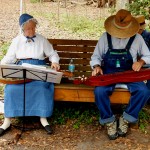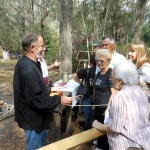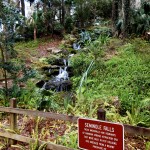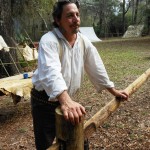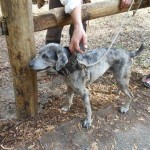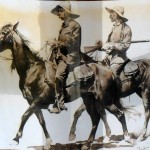Ranching isn’t the first occupation that comes to mind when one thinks of Florida. Back in the 18th century, however, it thrived at the hands of the Spanish colonists, native Seminoles and American settlers, who first drifted down from Georgia and mirrored the rough conditions. The cattle and horses introduced by the Spaniards were smaller and more stocky than later herds, but they offered the same challenges – and more so, since it was virtually free range. The Anglos became known as Crackers, presumably as a result of the noise from their whips. But the term became one of derision, representative of people who were crude, morally deficient brutes. No one was more responsible for this slight than cowboy artist number one, Frederick Remington, who, in the late 19th century, branded them as “wild-looking individuals” on what appeared to be “very emaciated Texas ponies.”
- Daddy’s little helper
- Musicians
- Candle Making
- Rainbow Springs
- Still a Cracker
- Catahoula Panther Cur
- Weaver
- Crackers in portrait
Undaunted, Crackers are very proud of their heritage. And among their events, Florida Crackers celebrate annually in February in Rainbow Springs State Park in Dunnellon, just north of Citrus County. It was there that we met not only genuine Crackers but also their sturdy horses, cattle and a mascot — a Catahoula Panther Cur. The dog is a member of the first breed created in North America, native to Catahoula County in Louisiana. Its principal talent is boar hunting, and the heavy collar is designed to protect the neck and throat from the swine’s vicious teeth. During the weekend, we also visited home makers, music makers and craft makers of every stripe.
The Florida Cracker Trail Association is dedicated to preserving the Cracker legacy through education, active involvement and scholarship. Each year, they hold a week-long Cross-Florida Cracker Trail Ride (without cattle) from the Sarasota area on the west coast to Fort Pierce on the east.


